Katzhagen - Archive - November 2015
Abrupt Gravity-based Discharging
A slightly baffling term from the age of wonderfully creative neologisms which remains a mystery to non-professionals without further explanation.
The term abrupt gravity-based discharging describes a property of the construction of saddle-bottomed large-volume hoppers labeled "Fad 168", which were in use in the 1960s on German tracks. This type of self-discharging hoppers was in operations until the late 1990s and was used to transport bulk goods such as coal or ore from mines or ports to steelworks or power plants. Its LGB model hit the road in October 2015.
The prototype's discharging cannot be controlled and the entire load is dropped abrutply when opening the side flaps.
The reasons why the manufacturer Maerklin decided to not equip the model with a discharging function (say to produce it without moveable flaps) remains a mystery to the modeller, but is no subject to discuss here.
Some changes simple to implement provide for a more prototypical appearance of this vehicle...
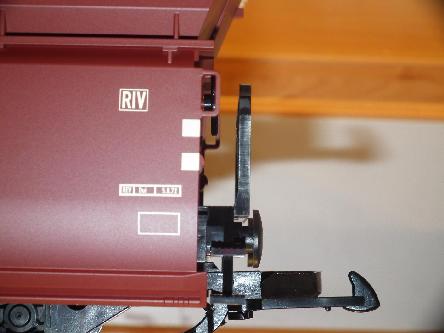
A platform significantly too narrow ...
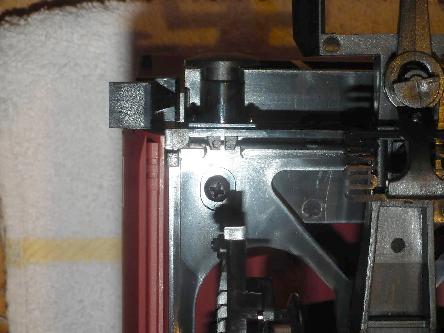
... and buffers too short.
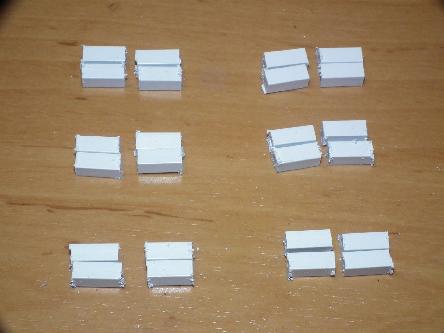
Remedy for the platform: 5x5mm ABS cuttings
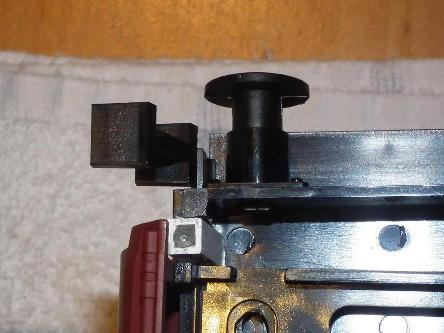
Try-on of the filling elements beneath the platform
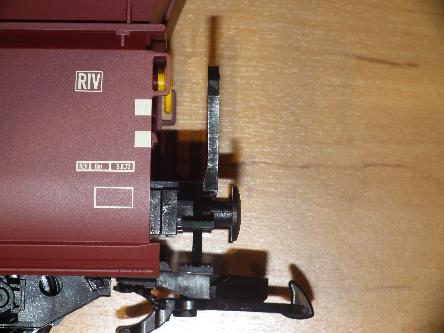
There's enough of space for the personnel on the platform now after it was pulled out a bit. Two newly drilled holes in the platform's plate make for a new fastening. The buffers also were pulled a tad and were fastened with a little CA glue.
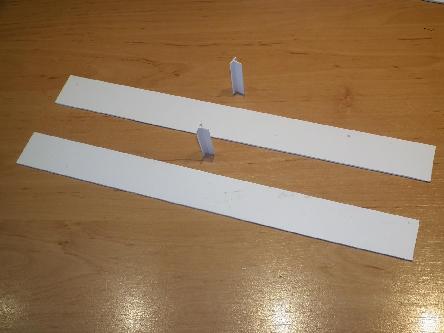
Carrier and support meant to hold the load
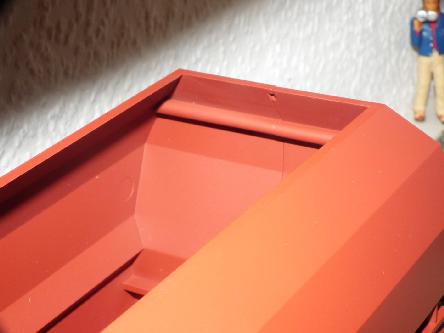
Bulge to be abused as a rest for the carrier plate
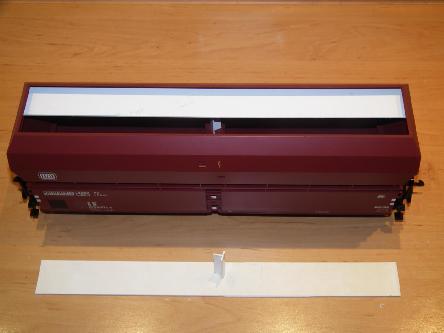
Fitting of the two-part load carrier
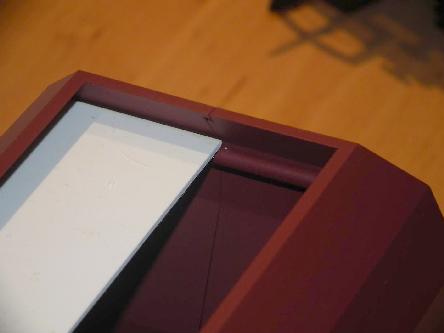
Obviously correct measurements were taken...

...since the carrier's second part fits in as well.
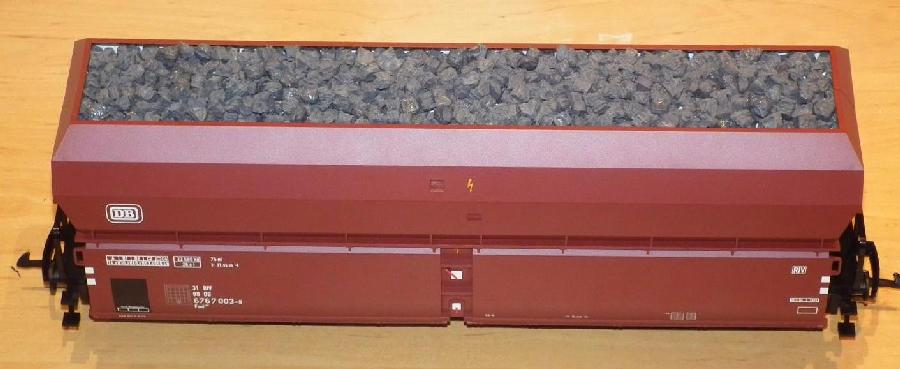
A first test load shows that the carrier needs to be painted black

Carrier now painted black
The small changes applied to this car aren't eye-catchers at all but make for a
more winsome look and require neither much material nor time-consuming work.
The Playmobil dump material (item #7843) was used as a load which can be ordered online or at the factory only. It was glued to the cargo bay with Sarnacol 2116 (made by Sika) which also had been used before for the tracks' ballasting outside. The pictures give a wrong impression of this material due to the flashlight, in fact it's a lot darker. Its anthracite-like colour allows for a usage with various applications.
The plastic axles which the cars come with ex-factory were replaced with metal axles in order to achieve both an improved ride and sound.
The Playmobil dump material (item #7843) was used as a load which can be ordered online or at the factory only. It was glued to the cargo bay with Sarnacol 2116 (made by Sika) which also had been used before for the tracks' ballasting outside. The pictures give a wrong impression of this material due to the flashlight, in fact it's a lot darker. Its anthracite-like colour allows for a usage with various applications.
The plastic axles which the cars come with ex-factory were replaced with metal axles in order to achieve both an improved ride and sound.
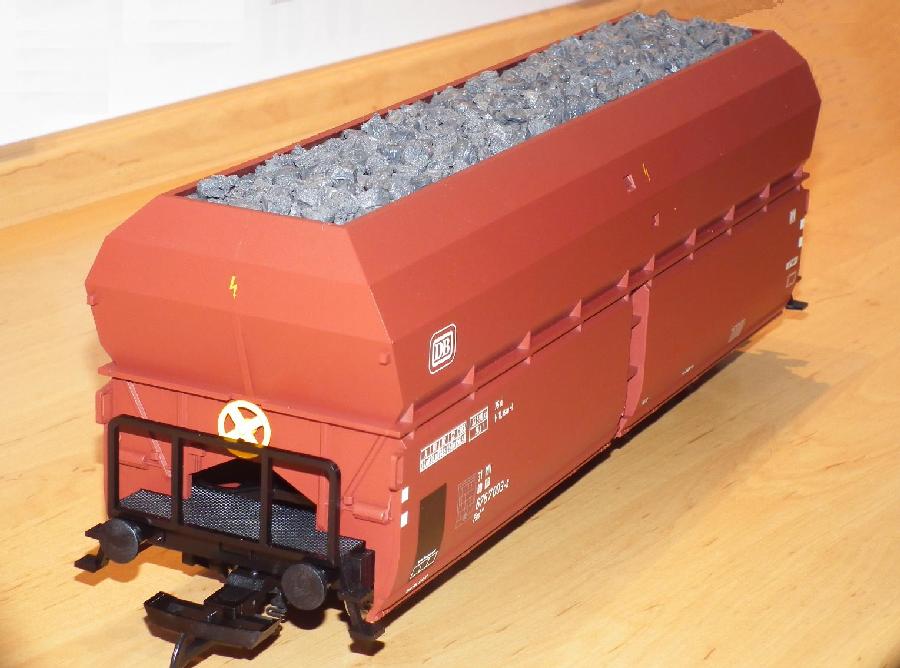
Self-discharging hopper Fad 168 loaded with dump material - now also featuring a correctly coloured handwheel
RhB Telephone Booth
The model of the RhB phone booth KV2 is a kit designed by Hans-Peter Langula and distributed by MDS Mueller. It consists of exactly milled white plastic parts.
At first glance the parts look a tad sober but become charming as soon as being painted in the correct colours. Last but not least the details in form of the door handle and the ventilating gratings make for an excellent prototypical appearance.

Left side and ....
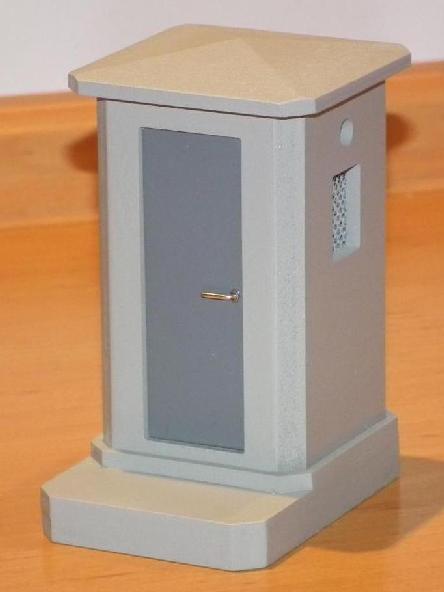
... right side of the RhB phone booth
October 2015 | Archive "Current Affairs" | January 2016

